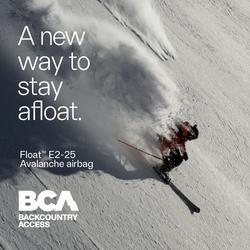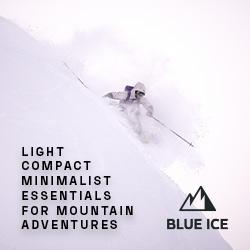Forecast for the Salt Lake Area Mountains

Monday morning, February 18, 2013
A 'pockety' MODERATE avalanche danger remains today. Areas with recent deposits of wind drifted snow on northwest through southeast facing slopes in the mid and upper elevations are the most likely places to trigger a slab avalanche today. Out of wind affected terrain, the avalanche danger is generally LOW.
 Weather and Snow
Weather and Snow
Temperatures have been on the decline over the last 24 hours and are around 5 degrees this morning. The quick hitting cold front mid day yesterday produced light snow flurries with no real accumulation. The northwest winds did ramp up during and after the cold front peaking in speed late afternoon on Sunday and now since have decreased into the light category.
 Recent Avalanches
Recent Avalanches
It seemed to me that the wind was creating crusts more so than increasing the danger by creating fresh drifts but there was enough snow to blow around and form some new slabs that were sensitive enough to produce some minor avalanches. The most notable one being 5 inches deep on northeast facing Little Water Peak triggered by a skier throwing a chunk of snow onto the slope below. DETAILS I experienced minor cracking along the ridges in the Provo region on Sunday and there was some skier triggered wind slabs noted from the Ogden region as well.
Persistent Weak Layer
Description
The wind is a major factor for increasing the avalanche danger although I wouldn't rate things as all that dangerous today. What you may find is that some of these newly formed drifts could still be sensitive today. Slope cuts should be fairly effective in testing to see if the new wind slabs will release.
If you poke around enough you may be able to find an area where one of these fresh drifts has formed on top of old weak faceted snow. This is the trickier and more dangerous situation where a slope cut may not give you the correct feedback. Thinner shallow snowpack areas where you can easily poke your ski pole through to the ground or where your sled track is sinking deep into the pack are the biggest indicators of a shallow weak snowpack structure. You'll most likely find granular sugary layers of snow deeper in the pack in these areas.
Additional Information
We'll see mostly clear skies today with ridgetop temperatures getting into the upper teens or low 20s and light westerly winds. Winds shift to the southwest tonight and increase in speed into Tuesday ahead of a storm system that has similarities to last weeks system. The best chances for snow are Wednesday and Thursday where we should see enough snow to improve riding conditions again. Another more potent looking trough is shaping up for Saturday.
General Announcements
Go to http://www.backcountry.com/utah-avalanche-center to get tickets from our partners at Park City, Beaver Mountain, Canyons, Sundance, and Wolf Mountain. All proceeds benefit the Utah Avalanche Center.
If you trigger an avalanche in the backcountry - especially if you are adjacent to a ski area – please call the following teams to alert them to the slide and whether anyone is missing or not. Rescue teams can be exposed to significant hazard when responding to avalanches, and do not want to do so when unneeded. Thanks.
Salt Lake and Park City – Alta Central (801-742-2033), Canyons Resort Dispatch (435-615-3322)
Ogden – Snowbasin Patrol Dispatch (801-620-1017)
Powder Mountain Ski Patrol Dispatch (801-745-3772 ex 123)
Provo – Sundance Patrol Dispatch (801-223-4150)
Dawn Patrol Forecast Hotline, updated by 05:30: 888-999-4019 option 8.
Twitter Updates for your mobile phone - DETAILS
Daily observations are frequently posted by 10 pm each evening.
Subscribe to the daily avalanche advisory e-mail click HERE.
UDOT canyon closures UDOT at (801) 975-4838
Wasatch Powderbird Guides does daily updates about where they'll be operating on this blog http://powderbird.blogspot.com/ .
Remember your information can save lives. If you see anything we should know about, please participate in the creation of our own community avalanche advisory by submitting snow and avalanche conditions. You can also call us at 801-524-5304 or 800-662-4140, or email by clicking HERE
Donate to your favorite non-profit –The Friends of the Utah Avalanche Center. The UAC depends on contributions from users like you to support our work.
For a print version of this advisory click HERE.
This advisory is produced by the U.S. Forest Service, which is solely responsible for its content. It describes only general avalanche conditions and local variations always exist. Specific terrain and route finding decisions should always be based on skills learned in a field-based avalanche class.




